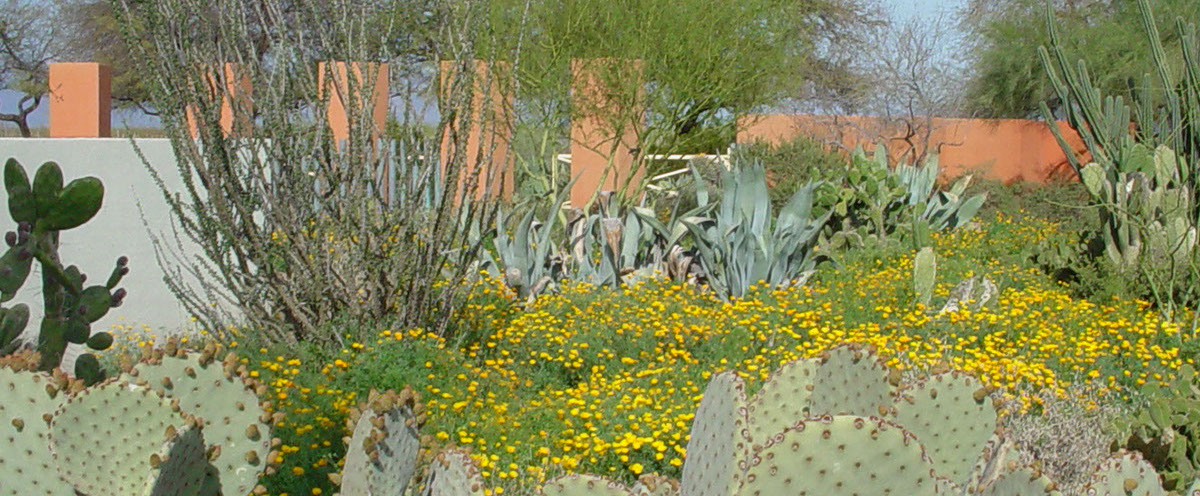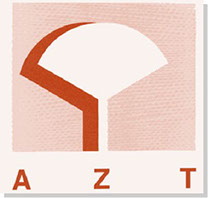


On site & Transplant Irrigation
With the exception of seed germination, there is no more critical period in the survival of a plant than the days and weeks immediately following transplantation. This transition can be further complicated if trees have been improperly cared for while stored at the construction site. Under ideal conditions trees should be delivered to the job site the day they are to be installed (Arid Zone Times, Volume 2 Issue 4).
JOB SITE STORAGE of boxed trees requires careful and conscientious irrigation. Appreciate that water enters the roots of plants through root hairs that are barely as wide as a human hair. They are easily and irreversibly damaged when soils become dry. Damaged root hairs do not recover when water is applied so plants must grow new ones. This regrowth may take more time than some recent transplants can tolerate.
When the root mass (tree roots and growing medium) dries out it can shrink and pull away from the sides of the box. Water applied at too fast a rate will run down the space between the root mass and the sides of the box and quickly drain out the bottom of the box. The person doing the irrigating gets a false sense of having wet the entire root ball.
When daytime temperatures consistently exceed 95 degrees, boxed trees growing in the nursery are irrigated twice a day (daily total gallons applied 24"box = 2.5 g, 36" box = 5.0 g, 42" = 7.0 g, 48" = 7.5g). Trees should be irrigated a minimum once a day when stored on site and irrigated slowly at low pressure so that water can soak in and penetrate the entire root mass. In the hot late spring and summer months trees left over the weekend without irrigation WILL BE seriously or possibly fatally damaged. Root balls should be moist but not saturated when trees are transplanted.
POST INSTALLATION IRRIGATION must take into account the soil type and drainage characteristics, other potential sources of water (lawn irrigation, rain gutters, general site drainage) and the differing tolerance of desert tree species to saturated soils. The goal of irrigation must be to establish a highly dispersed root system. Roots will not explore either dry or continuously saturated soils. Deep, regular irrigations encourage a well distributed root system that can effectively extract water and essential minerals from the soil, while providing an anchor for the tree. It may take several weeks or even months before the roots of transplanted trees explore beyond the original growing container. During this transition, irrigations schedules be appropriate to the season and the limited distribution of the roots. Such a schedule must be sensitive to the potential for under or over-watering since the soil surrounding the root mass may become saturated or dry and both conditions serve to impede the growth of new roots.
The Desert Botanical Garden has published a recommended irrigation schedule for trees based on temperature and the size of the container planted. Install water emitters a sufficient distance from the base of the trees that roots will grow out and away from the original rootball. It will also be necessary the increase the amount of water applied as the trees grows and matures. This may involve installing additional emitters or replacing low gallon emitters with higher volume ones.
Ironwood, Foothill Palo Verde, Mulga (Acacia aneura) and other species that do not tolerate saturated soils must be irrigated with care (Arid Zone Times Volume 1, Issue 5). The great challenge is to provide enough water with out seriously over or under watering the new transplant. Both extremes are potentially detrimental, but of the two, over-irrigating is by far the most common problem. Post installation irrigation schedules can have lasting positive or negative effects on the long term root development and ultimately the health of desert landscape trees.

© Copyright 2000-2020 Arid Zone Trees